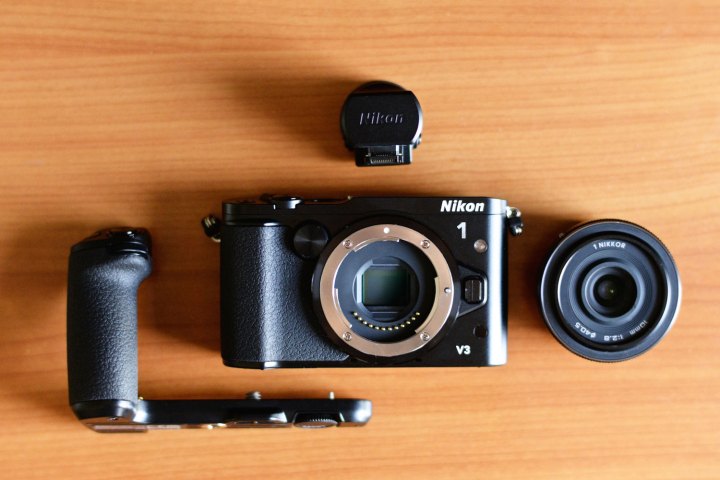
German camera buying guide Digitalkamera.de found that some current 1-series cameras were no longer available to order, including the flagship Nikon 1 V3 model, according to Digital Photography Review. The 1 V3 was announced back in 2014 and has yet to see a replacement. Retailer B&H lists the camera as special order only, with a curiously long expected availability of four to six weeks. Availability through Amazon is via third-party resellers only. The idea that the 1 V3, now three years old, is approaching its end of life comes as no surprise, but camera companies generally announce replacement models before current versions stop shipping, and Nikon has not done this.
The newer Nikon 1 J5 — which we were rather fond of in our review — is faring better. Released in 2015, the 1 J5 is the most recent camera in the series, and appears to be available for order by retailers “while supplies last,” according to Digitalkamera.de.
For its part, Nikon has responded that it “continues to produce and sell the Nikon 1 line” and that it “cannot comment on future product or speculation,” according to a statement given to Digital Photography Review (we reached out to Nikon, and received the same response). With apparently limited availability of its current products and no new cameras released since 2015, however, it seems fair to speculate that Nikon is moving away from the 1-series.
The good news here is that Nikon may be working on a mirrorless solution that can truly compete with the likes of Sony. Rival Canon has also made significant inroads into the mirrorless arena, with cameras like the EOS M5 proving to be capable machines for enthusiasts. To truly compete, Nikon would have to release a mirrorless camera with at least an APS-C sensor, although we’d certainly prefer to see a full-frame option, as well. It would also need to make significant improvements to its live-view autofocus tech, which remains a sore point in the company’s DSLRs, although the 1-series was much better here.
From a business perspective, a move toward high-end mirrorless and away from low-end cameras, in general, is also wise. Since the rise of mirrorless cameras (and smartphones), both point-and-shoot and DSLR sales have suffered rather dramatically. Point-and-shoots peaked at a high of around 110 million units shipped in 2008, while just 12.5 million shipped in 2016, according to the Camera and Imaging Products Association (CIPA). DSLRs fell from a high of just over 16 million units in 2012 to about 8.4 million units in 2016. For their part, mirrorless camera shipments have also decreased, but much less dramatically, from about 3.9 million units to 3.2 million.
Units shipped only tells part of the story, however. Interestingly, actual revenue generated has increased steadily year-over-year for mirrorless cameras, while DSLR and point-and-shoot revenue continues to decline. This represents a shift toward higher-end, higher-margin cameras, something that Nikon is certainly aware of. Last year, the company restructured its imaging business around high-end products, and earlier this year it cancelled its planned advanced compact DL series, which was also built around the 1-inch-type sensor format. Discontinuing the 1-series would fit the pattern, but after years of development and with an established global user base, it is easy to see why Nikon would avoid admitting to the series’ demise, if indeed it is true. Nikon could surprise us and announce a 1 V4 or J6 tomorrow, but we won’t be holding our breath.



